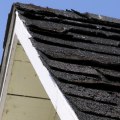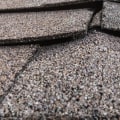When it comes to replacing a storm-damaged roof, your home insurance policy can be a great help. But how does the insurance company determine the cost of replacing your roof?If your policy is an RCV (Replacement Cost Value) policy, your insurance company will pay the replacement value of your roof at the time of a covered loss. This means the cost of replacing it minus the excess. Generally, a typical comprehensive home insurance policy covers the roof and the cost of replacing it if it is damaged due to a sudden accident or act of nature.
However, problems resulting from general wear and tear or a roof that has exceeded its expected service life cannot be reimbursed as they are the responsibility of the owner. There is a relationship between the age of your roof and your insurance cover. ACV (Actual Cash Value) cover is often used for old or dilapidated roofs as it is usually a less expensive way to cover them. Some insurance policies may give you a choice between ACV or replacement cost, but if your roof is over a certain age (usually 15-20 years old, but each insurance company will have its own guidelines), your insurer may automatically stipulate that you have ACV coverage. Some states, such as Florida, do not allow insurers to use ACV to evaluate roof replacement coverage. Replacement cost coverage is a little easier to understand than actual cash value.
If you have a homeowners policy that covers your roof on a replacement cost basis, the insurance company agrees to pay you what it would cost to replace your roof with a comparable new one. Your claims adjuster will research new roofing materials that are comparable to what you have on your home now and offer you a settlement based on what it would cost to replace your roof with these materials. Replacement cost cover is usually more expensive than actual value cover, but it often means that the excess could be your only out-of-pocket expense if your roof is damaged. If your roof is new or in good condition, you can insure it at replacement cost. Some companies automatically assign replacement cost coverage to your roof based on its age, or you can choose between actual cash value and replacement cost. If you can choose between actual cash value and replacement cost coverage, you will need to consider several aspects of your financial situation to determine coverage.
You can choose ACV coverage if you do not have the funds to pay replacement cost, which is likely to be a more expensive option. However, if you choose ACV coverage, be aware that you will probably pay more out-of-pocket after a loss, as your insurance company will not cover the depreciation of your roof. You may want to consider whether you have the finances to comfortably pay a larger portion of a roof loss. If you have the option and the budget, replacement cost cover could be a good option as it provides you with a higher level of protection against the costs of replacing or repairing your roof following wind damage. You may have the option to choose replacement cost coverage or actual cash value coverage, but it depends on the insurance company as well as the age and condition of your roof. If your roof is more than 15-20 years old or in poor condition, your insurer may automatically cover it for its actual cash value and you may not have the option to choose replacement cost. Similarly, some home insurance policies automatically cover newer roofs at replacement cost.
Repair coverage usually takes into account the depreciation of the roof. This means that you will get a percentage of the replacement cost based on the material and age of the roof. It can be as low as 15% for a roof near the end of its useful life. After going through the claims process and sharing your insurance documentation with your contractor, you are ready to begin the process of getting repairs or a replacement roof. Many roofing companies will inspect a roof for free in hopes of winning future business (just don't be surprised if they find a bunch of problems).
Your best ally in this fight (if it comes to that) will be a licensed roofing contractor, not a lawyer. If your roof is in disrepair, for example, or if it is more than a certain number of years old, your insurance company may exclude coverage for roof damage. If the insurance company's offer won't pay for a replacement roof of the same quality, a good contractor will be your advocate. After submitting proof of completion, you'll get a check for the recoverable depreciation of the old roof and you'll have a new roof that should last for years. Coverage is usually reduced for roofs over 20 years old, as they can only be insured for their actual cash value, not their actual replacement cost. Damage from ice dams such as icicles and ice build-up is also common risk to roofs leading to collapse and formation of barriers around gutters which can cause water overflow resulting in leaks or collapse. If your roof suffers sudden damage due to an accident or act of nature, home insurance will often help cover the costs associated with replacing it.



